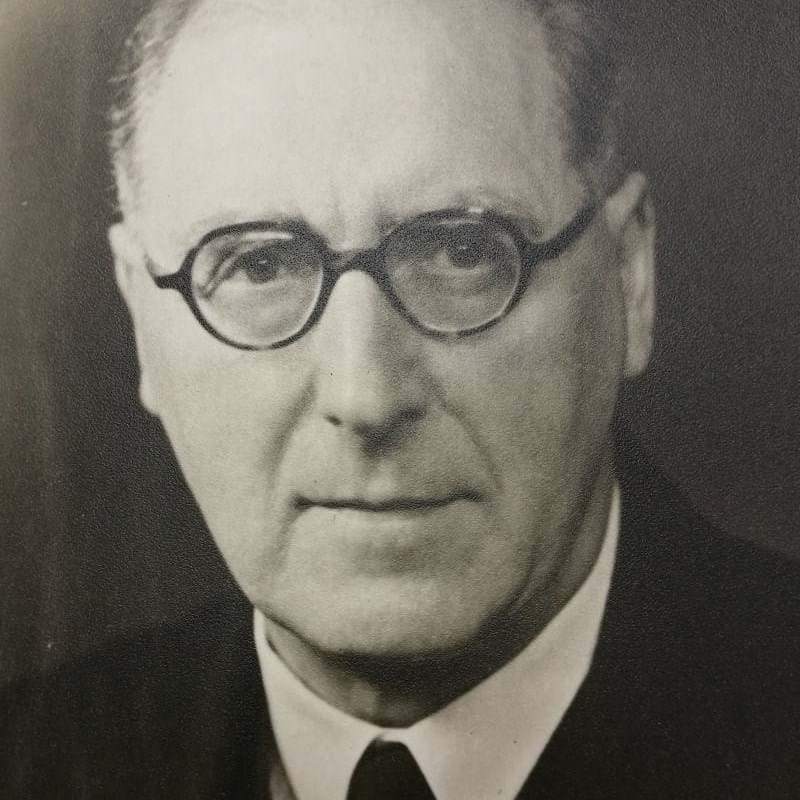
Stanley Robson: 1952–1954
Stanley Robson was born in Sunderland and took his degree in science at the Armstrong College (later King's College), Newcastle-on-Tyne, where he was awarded a post graduate research scholarship in chemistry and worked under Professor P P Bedson. In 1913 he was awarded a Scholarship of the Royal Exhibition of 1851 which took him to Imperial College of Science & Technology, London to work with Professor W A Bone on catalysis. It was during his work at Imperial College that he first came into contact with industrial problems and had the opportunity of training in chemical engineering under Professor J W Hinchley. His later work took him into the field of extractive metallurgy and to continued close contact with both the Royal School of Mines and the Departments of Chemical Engineering and Chemical Technology of the Imperial College of Science.
In 1950 he was made an Honorary Fellow of that College for his distinguished achievements in chemical industry and in British metallurgy and for his services to past and present students of the Royal School of Mines.
His first industrial work was concerned with the manufacture of sulphuric acid during the First World War. At that time the country was desperately in need of oleum for the manufacture of explosives and there were few contact acid plants in the country and fewer chemists with the experience necessary to erect and operate them. At the invitation of Col. Sir Frederick Nathan - a former President of the Institution who was then with the Admiralty - Stanley Robson undertook to help build and to bring into commission a 'Tentelev' arsenical pyrites burning sulphuric acid plant at Holten Heath. He had the very great advantage of the help of the Nobel Explosives Company and the consulting engineers of the Admiralty, but the job had to be done with entirely inexperienced staff and work people.
After the war he was invited by Dr Herbert Levinstein to bring into proper operation a twelve-unit Grillo type contact acid plant which had been built during the war to Continental designs by the British Dyestuffs Corporation and had failed badly. A number of suggestions for its better construction were made but Stanley Robson came to the conclusion, which later events justified, that acid plants must ultimately be built in much larger units than previously designed, and that an entirely new approach to the problem was necessary. On solving this problem he was invited by the National Smelting Co Ltd to undertake to alter and bring into commission the then large sulphur burning acid plant built during the war at Avonmouth and adapt it to the treatment of zinc smelter gases. The method he had worked out for the Dyestuffs Corporation was found to be completely satisfactory with these materials and led to the design and construction of large plants for various special duties at home and in many overseas countries.
Alongside this work, he studied in precise scientific detail the various processes for roasting sulphide ores and was responsible for the development of a sintering method which not only gave rise to a concentrated sulphurous gas suitable for acid making, but also greatly improved the output and yield in the subsequent metallurgical process.
He contributed much to the development of improved processes in the field of metallurgy, particularly that of zinc distillation and condensation, and was consultant to the Zinc Corporation and Imperial Smelting Corporation Group of Companies, and also to a number of large mining and metallurgical companies overseas. He was a member of a number of important committees of the DSIR and the Ministry of Supply, a member of Council and Vice President of the Institution of Mining & Metallurgy, and was President of the Society of Chemical Industry from 1949-1951.
Return to list